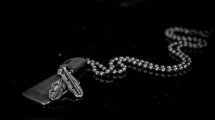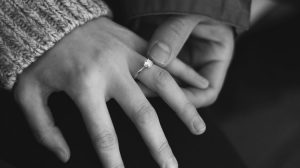As Wedding Know How editors, we write about things that we love and we think you'll like too. We have affiliate partnerships and sponsorship and may generate some revenue from these at no cost to you.
With natural diamonds being the reigning king of the jewelry world, many other gemstones and materials are often used as more affordable diamond imitations. Some are of these are of really low quality and aren’t worth your attention but others bring a lot to the table and should be considered.
One such example is cubic zirconia.
This fascinating natural precious gemstone is relatively new to the jewelry world, as it was discovered around the turn of the 20th century. Since then, however, cubic zirconia has become one of the most popular alternatives to natural diamonds and is frequently used in jewelry of all types and price ranges.
There are several misconceptions about cubic zirconia. Is it a good investment or is it just a fake diamond? Is it synthetic or a real gemstone? Below, we’ve covered the most frequently asked questions about cubic zirconia.
1. What is cubic zirconia?
Cubic zirconia is a gemstone synthesized from the yellowish monoclinic mineral baddeleyite – a natural form of zirconium oxide. However, in this form, cubic zirconia is extremely rare.
In 1970, Russian scientists at the Lebedev Physical Institute in Moscow perfected a technique for control growth of single-crystal Cubic Zirconia. Mass production of the mineral started several years later, and it became a popular stone used in jewelry. Cubic zirconia has been one of the most popular jewelry gemstones ever since then.
Admittedly, cubic zirconia owes much of its popularity to the fact that it looks very much like a diamond. That shouldn’t take away from the qualities of this gemstone, however – cubic zirconia is a gemstone in its own right that makes for beautiful jewelry pieces. Today, all cubic zirconia is lab-created.
2. How is cubic zirconia made?
Like any lab-created item, cubic zirconia is made using a recipe and in a tightly-controlled environment. The main ingredients used in this recipe is zirconium oxide and other minerals such as calcium oxide. The manufacturers can manipulate the recipe to alter the color of the stones, creating colored cubic zirconia.
3. Is cubic zirconia just a fake diamond?
As much as cubic zirconia looks like a diamond, it is a different gemstone. Some of the main differences between the two include the following:
- Cubic zirconia is relatively heavier than diamonds of the same size because it’s denser.
- Cubic zirconia is not as hard as diamonds – the latter rank 10/10 on the Mohs scale of hardness while cubic zirconia sits at 8-8.5 out of 10. This is still very high making cubic zirconia an excellent choice for jewelry. For comparison’s sake, rubies and sapphires sit at 9/10 hardness.
- Cubic zirconia doesn’t last as long as diamonds – because it’s not as hard as a diamond, a cubic zirconia stone tends to scratch more easily. It also becomes cloudy over time.
- Cubic zirconia doesn’t have any inclusions, blemishes, or other impurities that natural diamonds have. In other words – cubic zirconia often looks better than a diamond because it’s lab-created.
- Cubic zirconia is brilliant, but it doesn’t have the same depth that diamonds have.
- Colored cubic zirconia tends to have more vivid color play than diamonds.
- Cubic zirconia has little to no value compared to diamonds. Diamonds are (and will always be) valued higher than cubic zirconia not only because of their longevity, but also because they’re rarer and more prestigious.
4. Can a professional jeweler tell the difference between cubic zirconia and a diamond?
Yes, any good jeweler should be able to tell the difference between cubic zirconia and a diamond. They will typically need to use 10x magnification to do so, however, as the two gemstones are very similar. Another way a jeweler may try to identify the stone is by simply weighing it as diamonds are lighter than cubic zirconia. Telling cubic zirconia and diamonds apart with the naked eye is much more difficult but not impossible.
5. How can you tell the difference between cubic zirconia and a diamond?
Cubic zirconia is almost indistinguishable from a diamond for the untrained eye. You’ll have to be careful when purchasing ‘diamond’ jewelry, as some unscrupulous sellers may try to palm off cubic zirconia as diamonds. If you’re purchasing a diamond, always request for a certificate of authenticity such as a GIA or AGS certificate. If a jeweler isn’t offering official certificates for the diamonds they are selling, it’s best to avoid purchasing from them. Also, purchase diamonds from a reputable retailer.
6. How long does cubic zirconia last?
With everyday wear, cubic zirconia usually lasts 5-10 years, and with occasional wear – a couple of decades. 5-10 years may not sound too long and it isn’t. You’ll also want to make sure that you protect your cubic zirconia stone safe from scratches and clean it properly to maximize its longevity.
That’s one of the main reasons why cubic zirconia is much more affordable than diamonds, however – it’s intended as an affordable look-alike diamond alternative that you can wear every day without caring too much that you might damage it accidentally.
All that being said, if you intend to wear your cubic zirconia jewelry only on special occasions and you take good care of it, it can last for decades just jewelry made with any other gemstone.
7. What can scratch a cubic zirconia?
Anything that’s harder than cubic zirconia can scratch cubic zirconia. This means that objects such as rubies, sapphires, tungsten, moissanite and diamonds can all scratch cubic zirconia because they’re all harder.
8. Should you purchase cubic zirconia engagement rings?
Given cubic zirconia’s short life and relative lack of value, it’s generally not viewed as a good choice for engagement or wedding rings. These types of jewelry are meant to be worn every day, and as a cubic zirconia stone is likely to become cloudy and scratched, it’s not ideal for an engagement ring. However, it can always be replaced without much cost if this were to happen.
On the other hand, given that cubic zirconia stones are much more affordable than diamonds (and weddings today are so painfully expensive!), it can be a good idea to get a cubic zirconia engagement ring first, to save some money, and upgrade it to a diamond in several years when you’ve got the budget for it. Just make sure to let your partner know about that plan and not do it behind their back.
Click here to browse a range of cubic zirconia rings.
9. Is cubic zirconia worth anything?
Cubic zirconia is inexpensive, with a quality 1-carat stone starting at around $20. In terms of monetary value, cubic zirconia isn’t worth it and you won’t be making an investment by purchasing it. However, as an alternative to diamonds, it’s an excellent option. Considering that a 1-carat diamond ring can set you back around $10,000, for some couples, a beautifully made cubic zirconia ring is a more financially savvy decision.
10. How is Swarovski zirconia different from cubic zirconia?
People often draw a distinction between Swarovski zirconia and cubic zirconia but the former is just a more polished and higher-quality variant of the latter. As such, Swarovski zirconia is more expensive than other types of cubic zirconia and it tends to look even better. In terms of hardness and durability, however, both types are identical.
11. How should you take care of cubic zirconia jewelry?
Cleaning, storing, and looking after cubic zirconia jewelry should be done with a lot of care.
Similar to other gemstones, cubic zirconia should be stored in soft containers with no direct contact with other gemstones or metals, to avoid scratches.
Cleaning cubic zirconia should also be done regularly to prevent dust and dirt buildup. It’s best done with lukewarm water, a soft piece of cloth or a soft-bristled brush, and a mild soap.
12. How is cubic zirconia graded?
Cubic zirconia grades vary a lot, depending on the manufacturer and the certification lab. Generally, cubic zirconia is graded on the same 4Cs as diamonds – clarity, color, cut, and carat weight. The most common grading system is the five-level system of As, where A is the lowest grade, followed by AA, AAA, AAAA, and the highest – AAAAA.
13. Is cubic zirconia similar to zircon?
It’s a common misconception that cubic zirconia is a type of zircon – that’s not the case. Zircon or zirconium silicate is a much softer gemstone that sits at just 6-6.5 out of 10 on the Mohs scale of hardness. Zircon is also a natural gemstone, unlike cubic zirconia which is all lab-created today. Colorless zircon is also a substitute for diamonds.
14. Is cubic zirconia jewelry a good idea?
Yes, it most definitely is. If you’re going for a diamond look-alike, cubic zirconia is your best bet. In fact, many celebrities make cubic zirconia replicas of their expensive jewelry and wear those, leaving their diamonds safe at home! And what’s more, no one can tell the difference! If you’re after affordable and stylish jewelry, cubic zirconia is a great choice, just remember to purchase high-quality stones.








